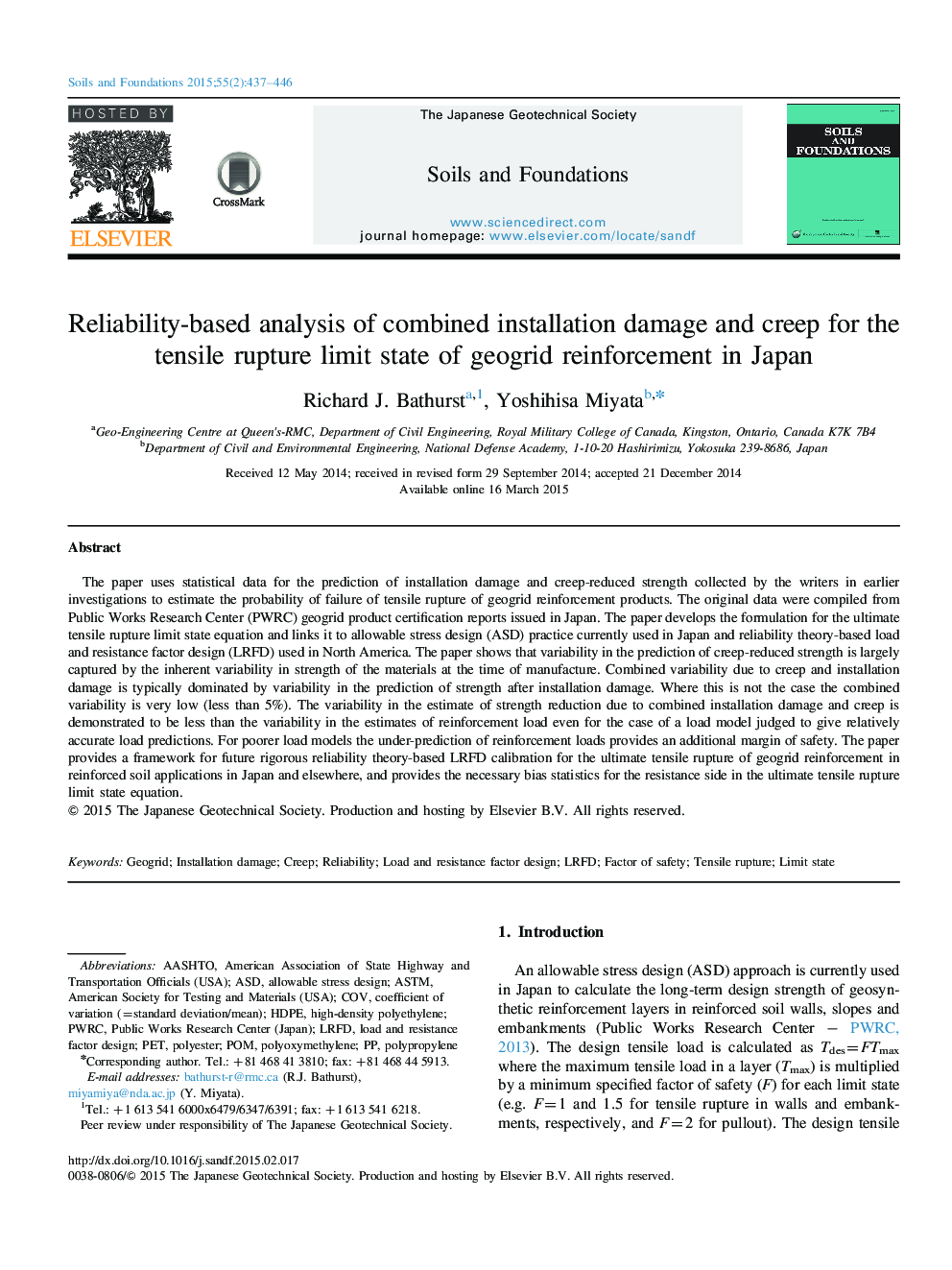| Article ID | Journal | Published Year | Pages | File Type |
|---|---|---|---|---|
| 307020 | Soils and Foundations | 2015 | 10 Pages |
The paper uses statistical data for the prediction of installation damage and creep-reduced strength collected by the writers in earlier investigations to estimate the probability of failure of tensile rupture of geogrid reinforcement products. The original data were compiled from Public Works Research Center (PWRC) geogrid product certification reports issued in Japan. The paper develops the formulation for the ultimate tensile rupture limit state equation and links it to allowable stress design (ASD) practice currently used in Japan and reliability theory-based load and resistance factor design (LRFD) used in North America. The paper shows that variability in the prediction of creep-reduced strength is largely captured by the inherent variability in strength of the materials at the time of manufacture. Combined variability due to creep and installation damage is typically dominated by variability in the prediction of strength after installation damage. Where this is not the case the combined variability is very low (less than 5%). The variability in the estimate of strength reduction due to combined installation damage and creep is demonstrated to be less than the variability in the estimates of reinforcement load even for the case of a load model judged to give relatively accurate load predictions. For poorer load models the under-prediction of reinforcement loads provides an additional margin of safety. The paper provides a framework for future rigorous reliability theory-based LRFD calibration for the ultimate tensile rupture of geogrid reinforcement in reinforced soil applications in Japan and elsewhere, and provides the necessary bias statistics for the resistance side in the ultimate tensile rupture limit state equation.
